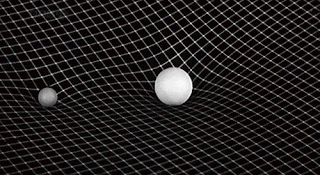Explanatory Writing - George Johnson
George Johnson is an American journalist who has achieved some amazing feats, including winning the AAAS Science Journalism Award and being the author of many well known books such as The Cancer Chronicles (2013), The Ten Most Beautiful Experiments (2008) and Strange Beauty: Murray Gell-Mann and the Revolution in 20th-Century Physics (1999). He is also the co-director of the Santa Fe Science Writing workshop and science writer at the New York Times.
He believed that there is nothing so complex that a
reasonably intelligent person cannot comprehend it. George wanted to be a guitarist when he was of the age 15-16, along with his friend Ron Light who played guitar in a mediocre 1960s-era garage band. But George soon realized his approach towards music as entirely theoretical and his lack of rhythm for playing guitar.
With his aspiring scientific curiosity, he was able to learn enough of the logic of basic harmony theory to execute the mindlessly simple algorithms called bass riffs. With his keen interest towards science, to understand the working of an amplifier seemed infinitely more interesting for him than trying to read music. He found electronics simple to understand and learned basics from The Boy's Second Book of Radio and Electronics.
From then onward, whenever George was trying to comprehend the workings of a television, digital computer or a molecular circuitry inside a cell, George followed the same technique, in a short, "Divide and Conquer" strategy, in which we draw a line around a small portion of the mechanism and treat everything inside as a black box. It was assumed that, given a certain input, the box will produce a certain output. Any device, no matter the complex, can be understood at various levels of abstraction using this technique.
George relates this approach with science writing. George explains even you write a newspaper story, a book, or something in between, the procedure is the same. One starts explaining with all the wrappings on. You try to build a mental picture initially and uncover gradually without telling the whole in the middle. This will help in maintaining the reader's interest. For example: "A kind of mathematical music played by an orchestra of tiny vibrating strings. Each note in this cosmic symphony represents one of the many kinds of particles that make up matter and energy."
George believes that relative to science, as an outsider writing for other interested outsiders, a science writer is ultimately an illusionist. The conjuring is in the service of a noble cause: getting as close as linguistically possible to scientific truth.

Comments
Post a Comment